In the ever-evolving landscape of construction and development, technology has emerged as a formidable ally in enhancing various processes. One area that has significantly benefited is site clearance—the crucial initial phase that sets the stage for construction projects. This article explores the pivotal role of technology, specifically drones, Geographic Information Systems (GIS), and 3D imaging, in revolutionizing modern building site clearance processes.
As construction meets innovation, the role of technology in Building site clearance becomes paramount, reshaping efficiency and precision in planning and execution.
The Evolution of Building Site Clearance
To truly appreciate the transformative impact of modern technology on Building site clearance, it’s imperative to trace the evolution of this essential construction phase. Before the era of technological advancements, site clearance was a process steeped in manual labour, relying heavily on rudimentary tools and human effort. This traditional approach, while serving its purpose, presented significant limitations that hindered the efficiency and accuracy of site preparation.
Manual Labour and Physical Effort
In the early stages of construction, site clearance predominantly relied on the sheer physical exertion of workers. These labourers, armed with basic hand tools such as shovels, pickaxes, and saws, would painstakingly clear the land of vegetation, debris, and unwanted structures. This laborious process was not only time-consuming but also physically demanding, often leading to delays in project timelines.
Surveying Equipment and Limited Data
Surveying equipment marked a notable advancement in site clearance techniques. Surveyors employed tools like theodolites and chains to measure distances, angles, and elevations. However, these methods were still relatively crude and prone to human errors. The lack of accurate and up-to-date data often resulted in incomplete or inaccurate site assessments, potentially leading to issues during subsequent construction phases.
Challenges of Complexity
As construction projects grew more intricate and site conditions became more complex, the limitations of traditional methods became increasingly evident. The manual approach struggled to account for the precise topography of the land, the intricacies of existing infrastructure, and the potential environmental impacts. This lack of precision often translated into unforeseen challenges during construction, leading to costly revisions and adjustments.
Time-Consuming Processes and Delays
Due to the inherently time-consuming nature of manual labour and traditional surveying techniques, site clearance often constituted a significant portion of the project timeline. Delays caused by adverse weather conditions, physical limitations of workers, and inaccuracies in data collection could impede project progression and hinder overall efficiency.
The Quest for Precision and Efficiency
It was the recognition of these challenges that prompted the construction industry to seek more efficient, accurate, and time-effective methods for site clearance. This impetus drove the integration of technology into site preparation processes, giving rise to the era of drones, Geographic Information Systems (GIS), and 3D imaging.
The subsequent sections of this article delve into the impact of these cutting-edge technologies, highlighting their role in overcoming the limitations of traditional site clearance methods. The transition from manual labour and rudimentary surveying to the realm of drones, GIS, and 3D imaging represents not only a shift in approach but a paradigmatic leap towards precision, efficiency, and innovation in the field of construction.
Advantages of Technology in Building Site Clearance
The integration of technology in site clearance brings forth a multitude of advantages. From streamlining workflows to enhancing accuracy, these advancements have significantly transformed the construction industry. Key benefits include:
Improved Efficiency and Speed
Technology accelerates the site clearance process by automating various tasks that would otherwise take days or even weeks. This efficiency ensures that projects kick off on time, avoiding unnecessary delays.
Enhanced Safety Measures
Incorporating drones and GIS technology minimizes the need for workers to physically access hazardous areas, thereby reducing on-site accidents and health risks.
Precise Data Collection
Accurate data collection is the cornerstone of effective site clearance. Technology enables real-time data gathering, ensuring that decisions are based on up-to-date information.
Drones in Building Site Clearance
Unmanned aerial vehicles, commonly known as drones, have emerged as valuable tools for site clearance activities. Drones equipped with high-resolution cameras and sensors can survey large areas quickly and precisely, providing an aerial perspective that was previously time-consuming and expensive to achieve. By capturing detailed images and topographical data, drones aid in identifying potential hazards, environmental constraints, and existing infrastructure on the site.
Benefits of Drone Usage:
- Rapid Surveys: Drones can cover vast expanses of land in a short time, expediting the survey process and reducing manual labour.
- High-Quality Imagery: Drones capture high-resolution imagery, offering a comprehensive view of the site’s current condition.
- Safety Enhancement: Site clearance often involves assessing hazardous areas. Drones can be deployed to these zones, minimizing risks to on-site personnel.
- Data Accuracy: The data collected by drones can be integrated into GIS and 3D imaging systems, ensuring accurate representation in planning and execution.
Geographic Information Systems (GIS) Integration
GIS technology enables the collection, analysis, and visualization of geographic data. In site clearance, GIS plays a pivotal role by incorporating spatial data, environmental factors, and regulatory information to inform decision-making.
Key GIS Applications in Building Site Clearance:
- Site Analysis: GIS helps assess the suitability of a site for construction by overlaying data on topography, soil composition, and infrastructure.
- Environmental Impact Assessment: GIS aids in evaluating the potential environmental consequences of site clearance, enabling responsible and sustainable practices.
- Regulatory Compliance: GIS integrates local regulations and zoning restrictions, ensuring that clearance activities adhere to legal requirements.
3D Imaging for Accurate Planning
The advent of 3D imaging technologies has brought a new level of precision to site clearance planning. LiDAR (Light Detection and Ranging) and photogrammetry techniques allow for the creation of detailed 3D models of the site, facilitating accurate measurements, volume calculations, and obstacle identification.
Advantages of 3D Imaging:
- Visualization and Simulation: 3D models provide a tangible representation of the site, aiding in simulations and understanding potential challenges.
- Quantitative Analysis: Accurate measurements and volume calculations are possible through 3D imaging, ensuring efficient resource allocation.
- Collision Avoidance: 3D models help identify potential clashes between construction elements and existing structures, enhancing safety during clearance.
Integrating Technologies for Seamless Building Site Clearance
The true power of modern site clearance lies in the seamless integration of these technologies:
Holistic Planning
Combining drone data, GIS insights, and 3D models allows planners to create a holistic site clearance strategy that considers every aspect.
Real-Time Monitoring
Drones can monitor the site in real time, capturing progress and identifying deviations from the plan, enabling timely adjustments.
Training and Skill Development
While technology is a game-changer, skilled operators are essential:
Specialized Training
Operators must receive comprehensive training to maximize the potential of these technologies while ensuring safe and efficient operation.
Skill Enhancement
Regular skill development programs keep operators updated with the latest features and techniques, maintaining operational excellence.
Overcoming Challenges
Embracing technology isn’t without challenges:
Initial Investment
Adopting these technologies requires a financial investment, but the long-term benefits outweigh the initial costs.
Data Security
Protecting sensitive project data from cyber threats is a critical concern that requires robust security measures.
Future Prospects of Technology in Building Site Clearance
The journey of technology in site clearance is still evolving:
AI and Machine Learning
Artificial Intelligence (AI) and machine learning algorithms will refine predictive analysis and automate decision-making in site clearance.
Enhanced Connectivity
The integration of Internet of Things (IoT) devices will enhance communication between different technologies, further streamlining the process.
Choose the Right Partner For Your Building Site Clearance
When it comes to selecting the right partner for your building site clearance needs, the decision carries significant weight. The canvas upon which your construction dreams will come to life begins with thorough and efficient site clearance. Among the options in London, Ultimate Rubbish Clearance stands out as a beacon of excellence. Here’s a guide on how to choose the right partner for building site clearance, and why Ultimate Rubbish Clearance emerges as the optimal choice:
- The Right Fit for Your Project: Choosing a partner for site clearance involves evaluating their expertise in relation to your project’s needs. A seasoned provider like Ultimate Rubbish Clearance brings years of experience to the table, catering to a diverse range of site clearance requirements. Their extensive knowledge ensures that no matter the complexity of your project, they have the insight to execute the clearance flawlessly.
- Expertise and Efficiency: A partner’s expertise and efficiency are paramount. Look for a provider with a track record of successful projects, demonstrating their mastery in site clearance. Ultimate Rubbish Clearance’s portfolio speaks volumes about their ability to deliver exceptional results, making them a compelling choice.
- Safety First: Safety is non-negotiable in any construction process. When choosing a partner, prioritize those who prioritize safety. Ultimate Rubbish Clearance’s unwavering commitment to adhering to safety protocols ensures that the clearance process is not only efficient but also secure for their team and your property.
- Eco-Friendly Practices: As the construction industry embraces sustainability, so should your site clearance partner. Seek providers who embrace eco-friendly practices in waste disposal and demonstrate a commitment to minimizing the environmental impact of their operations. Ultimate Rubbish Clearance’s dedication to responsible waste management aligns with these principles.
- Transparency and Communication: Effective communication is the cornerstone of a successful partnership. Choose a partner who maintains transparent communication channels throughout the process. Ultimate Rubbish Clearance prides itself on clear communication, providing you with updates and insights, and ensuring you’re informed every step of the way.
- Customized Solutions: Every project is unique, and the right partner should recognize that. Opt for a provider who tailors their approach to suit your project’s specific needs. Ultimate Rubbish Clearance’s ability to craft bespoke solutions ensures that your site clearance is aligned perfectly with your vision.
- Reviews and Testimonials: An excellent indicator of a partner’s capabilities is the feedback from previous clients. Look for reviews and testimonials that highlight their strengths. Ultimate Rubbish Clearance’s satisfied clients speak volumes about their quality of service and commitment to excellence.
- Promptness and Reliability: Timeliness is crucial in the construction industry. Choose a partner known for their promptness and reliability. Ultimate Rubbish Clearance’s reputation for meeting deadlines ensures that your project’s timeline remains on track.
- Collaborative Approach: The right partner isn’t just a service provider; they’re a collaborator invested in your project’s success. Seek a partner who views your goals as their own, going the extra mile to ensure your site clearance sets the stage for construction brilliance. Ultimate Rubbish Clearance’s customer-centric philosophy embodies this collaborative spirit.
In the grand symphony of site clearance, where precision and expertise set the stage for construction excellence, Ultimate Rubbish Clearance emerges as the harmonious conductor of your project’s preliminary movement. With their wealth of experience, unwavering commitment to safety, and dedication to eco-conscious practices, they aren’t just the right choice – they are the partner who will orchestrate a flawless overture to your construction masterpiece.
Conclusion
As construction continues to embrace innovation, the role of technology in modern building site clearance becomes increasingly indispensable. Drones, GIS, and 3D imaging have transformed the landscape by boosting efficiency, accuracy, and safety. These technological advancements are not only changing how sites are cleared but are also setting new standards for the construction industry as a whole.






